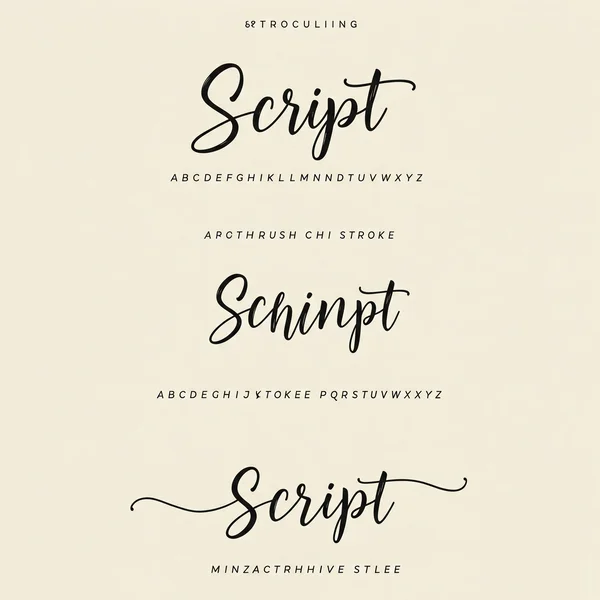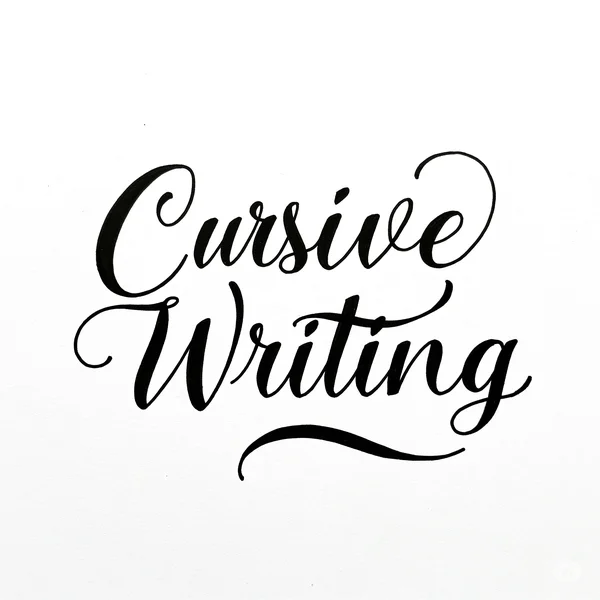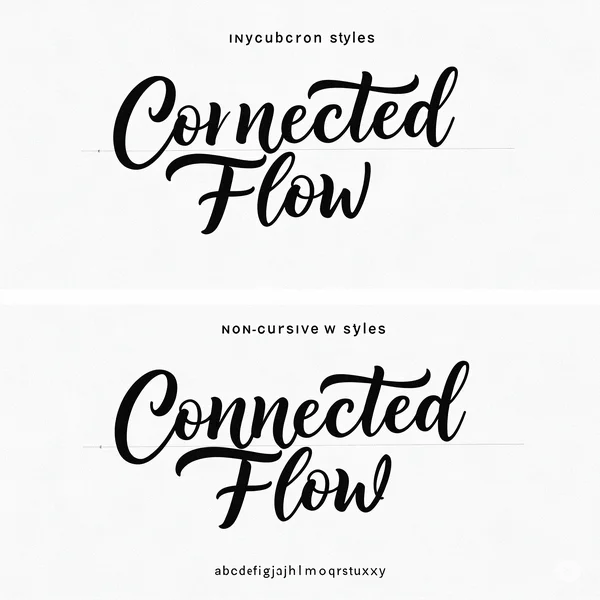Cursive vs Script Fonts: Key Differences & Style Choices
When exploring the world of typography, especially for handwritten styles, you'll often encounter the terms "cursive" and "script." While sometimes used interchangeably, they have distinct meanings that can influence your font choices. What is cursive text called, and how does it differ from other script fonts? Understanding these nuances can help you select the perfect Cursive Font Styles or broader Handwritten Fonts for your project. This guide will decode these terms and show you how to explore various options using a Cursive Script Generator. Ready to become a font connoisseur? Start exploring font styles on our generator!
What Exactly is a "Script Font"? The Broader Category
Let's start with the wider classification. What is the general definition of a script font?
Defining Script Fonts: The Art of Handwriting
A Script Font is a broad category of typefaces designed to emulate handwriting or calligraphy. These fonts aim to capture the fluidity, variation, and often, the elegance of hand-penned letterforms. The term "script" encompasses a vast range of styles, from formal and traditional calligraphic hands to casual, everyday handwriting. The key characteristic is that they look handwritten, whether the letters are connected or not.

Common Characteristics of Script Typefaces
While diverse, script typefaces often share some traits:
- Varied Stroke Weight: Simulating the pressure changes of a pen or brush.
- Flourishes and Swashes: Ornamental strokes that add decorative flair.
- Slanted or Italicized Appearance: Many, but not all, script fonts have a natural slant.
- Personal and Expressive Quality: They tend to feel more personal than standard serif or sans-serif fonts.
Defining "Cursive Font": A Specific Type of Script
Now, let's narrow our focus to Cursive Font styles. What makes a font specifically "cursive"?
The Essence of Cursive: Joined and Flowing Letters
The defining characteristic of a Cursive Font is that the letters are typically, though not always exclusively, joined together in a flowing manner. This connection between letters is designed to mimic the way handwriting naturally flows when writing quickly without lifting the pen. The emphasis is on fluidity and connectivity. This is often what people learn as "traditional handwriting" or cursive writing.

Traditional Cursive vs. Modern Interpretations
Traditional cursive, like Palmer or Spencerian script, has formal rules about letter shapes and connections. However, modern Cursive Font Styles found in a Cursive Script Generator can offer much more variety. You'll find elegant, formal cursives, but also more relaxed, playful, or even rugged cursive styles that still maintain that characteristic flow.
Key Differences: Cursive vs. Other Script Fonts
Understanding the distinction helps in choosing the right font. What is the main difference between cursive and script?
Letter Connection: The Defining Trait?
- Cursive: Primarily characterized by connected or "joined-up" letters. This is the most common visual cue.
- Other Script Fonts: This is a broader group. While some script fonts are cursive (with connected letters), many others feature disconnected letters. Think of fonts that mimic print handwriting, or certain calligraphic styles where letters stand alone for emphasis or stylistic reasons. So, all cursive fonts are script fonts, but not all script fonts are cursive.
Formality and Intended Tone
- Cursive: Often associated with a degree of formality or tradition, especially classic cursive styles. However, modern cursives can be very casual.
- Other Script Fonts: The formality spectrum is vast. You can find highly formal calligraphic scripts (like Blackletter) and extremely informal, almost messy Handwritten Fonts. The tone is incredibly diverse.
Flow, Rhythm, and Overall Impression
- Cursive: The connected letters create a strong sense of horizontal flow and rhythm across the text.
- Other Script Fonts: The visual impression can vary greatly depending on whether letters are connected, the style of strokes, and the presence of flourishes. Some disconnected scripts might feel more static or individually emphasized.

Exploring Different Cursive Font Styles with a Generator
Even within the "cursive" category, there's a world of difference. What types of Cursive Font Styles can I find?
Elegant and Formal Cursive Styles
These are perfect for wedding invitations, certificates, or any design requiring a touch of classic sophistication. They often feature delicate strokes and traditional letterforms.
Casual and Playful Cursive Options
For a more relaxed, friendly, or modern feel, casual cursives offer a less structured look. They can be great for social media, blogs, or personal branding.
Finding Your Unique Cursive Voice
The best way to understand the variety is to experiment. A good Cursive Script Generator, like the one on our website, allows you to type your text and instantly see it in numerous different cursive styles.
When to Choose a Cursive Font for Your Project
Knowing when to use a Cursive Font can elevate your design. When are cursive applications most effective?
Invitations, Certificates, and Formal Occasions
The inherent elegance of many cursive styles makes them a natural fit for formal announcements and documents.
Branding and Logos Requiring Elegance
For brands aiming for a sophisticated, luxurious, or classic image, a well-chosen cursive font in a logo or branding materials can be very impactful.
Personal Signatures and Quotes
Cursive is often the go-to for creating stylish signature-like text or for beautifully displaying impactful quotes.
When Other Script Fonts Might Be a Better Fit
Sometimes, a non-cursive Script Font is the superior choice. When should I consider other Handwritten Fonts?
Seeking a More Casual, Disconnected Handwritten Look
If you want a font that looks like neat, everyday print handwriting (where letters are not joined), a non-cursive script is what you need. These are often simply called Handwritten Fonts.
Specific Calligraphic Styles
Many highly stylized calligraphic forms, such as Blackletter (Gothic) or expressive brush scripts, feature disconnected letters but are undeniably "script" due to their calligraphic nature.
Fonts Mimicking Print Handwriting
For a very approachable, clean, and informal handwritten feel, fonts that replicate simple print handwriting (often taught to children before cursive) can be excellent.
How to Find the Perfect Cursive or Script Font on Our Site
Navigating a vast collection of fonts can be fun, but also a bit overwhelming. How can I easily find what I'm looking for with a font selection tool?
Using Our Cursive Script Generator to Explore
Our tool is designed for easy exploration. As you type, you'll see previews in various Cursive Font Styles and other Handwritten Fonts. This immediate visual feedback is key.
Filtering and Browsing for Your Ideal Style
Look for categories or tags if available (e.g., "formal cursive," "casual script," "calligraphy"). If not, simply scrolling and previewing a wide range will help you identify the characteristics you like. Pay attention to letter connections, flow, and overall mood.
Choose Your Style Wisely: Cursive and Script Fonts Unveiled
Understanding the difference between broad "script fonts" and the more specific "cursive fonts" empowers you to make more informed typographic choices. While all cursive is script, not all script is cursive. The key lies in recognizing the connected flow of cursive versus the broader range of handwritten and calligraphic styles encompassed by script.
Now that these terms are clearer, you can more confidently select the perfect Cursive Font Styles or other Handwritten Fonts for any project. Visit our Cursive Generator to put your newfound knowledge to the test and discover a world of beautiful handwritten typography! Which style speaks most to you and your projects? Let us know in the comments below!
Understanding Cursive and Script Fonts
Let's clear up some common questions:
Is cursive a type of script font?
Yes, absolutely. "Script font" is the broad category for all typefaces that mimic handwriting or calligraphy. "Cursive font" is a specific subcategory of script fonts, distinguished by its typically connected letters.
What is the main difference between cursive and script?
The main difference is that cursive fonts almost always feature letters that are joined together in a flowing manner. "Script font" is a much broader term that includes cursive fonts, but also includes many other handwritten or calligraphic styles where letters might be disconnected. Think of script as the parent category, and cursive as one of its children.
Can a script font not be cursive?
Yes. Many script fonts are not cursive. For example, a font designed to look like neat, printed handwriting (where letters are separate) is a script font but not a cursive one. Similarly, some decorative calligraphic styles are considered script fonts even if their letters aren't all connected.
What is "handwritten font" then?
"Handwritten Font" is often used as a synonym for "script font," or to describe script fonts that look more like everyday, natural handwriting rather than formal calligraphy. It generally implies a less formal, more personal feel. It can include both cursive (connected) and non-cursive (disconnected) styles.
How do I choose between a cursive and a non-cursive script font?
Consider the desired effect. If you want a flowing, connected look often associated with elegance or traditional handwriting, a Cursive Font is a good choice. If you need a more casual, print-like handwritten style, or a specific calligraphic style that isn't connected, then a non-cursive Script Font (or general Handwritten Font) would be more appropriate. Explore options with a Cursive Script Generator to see what visually fits your needs.